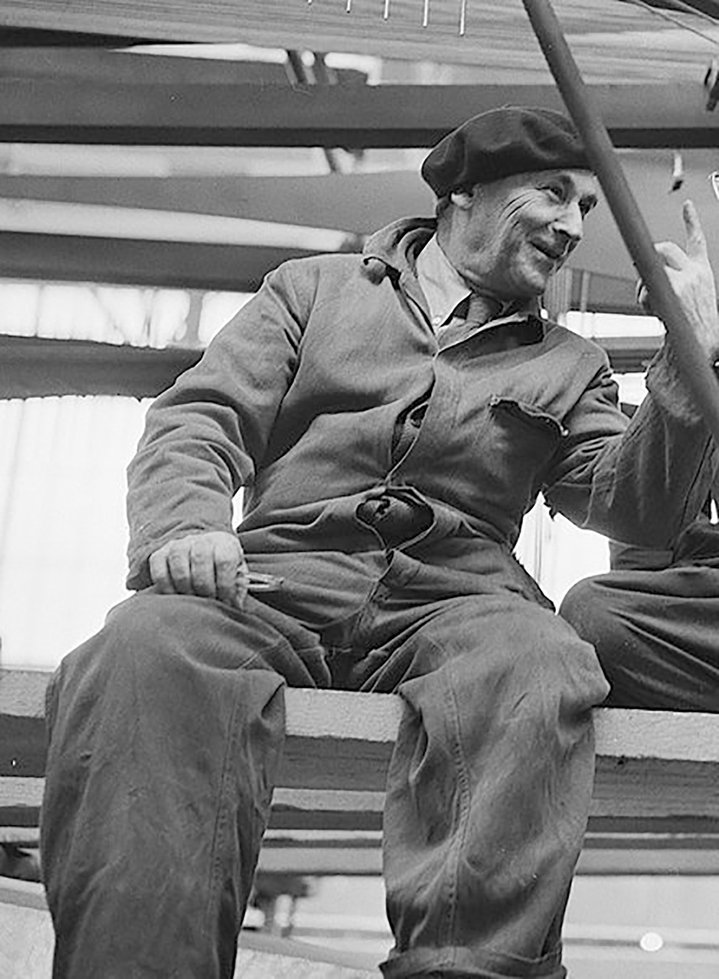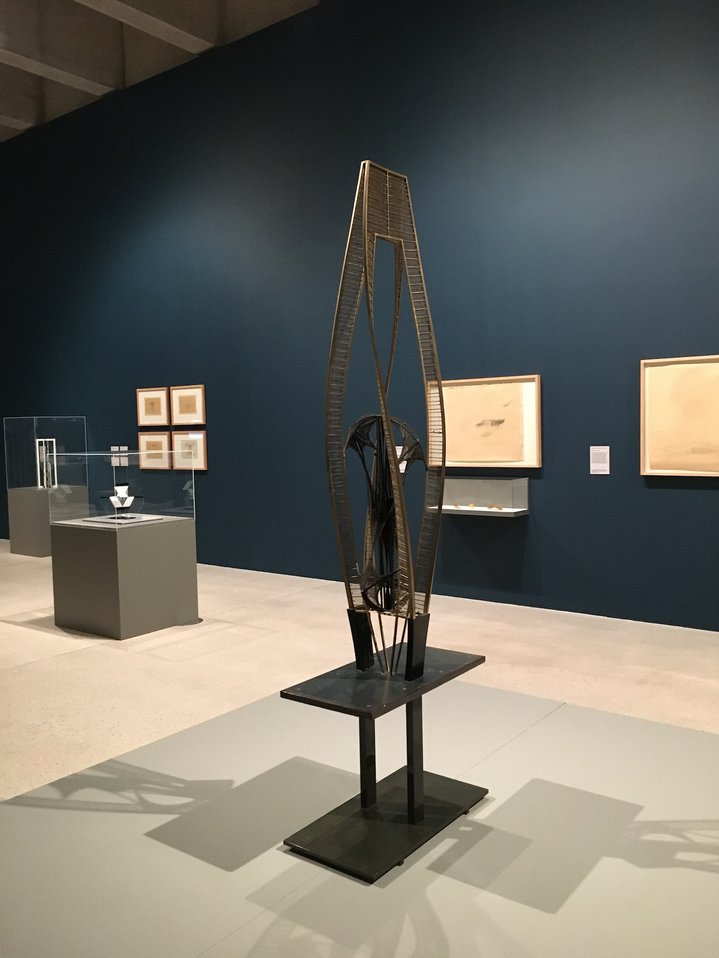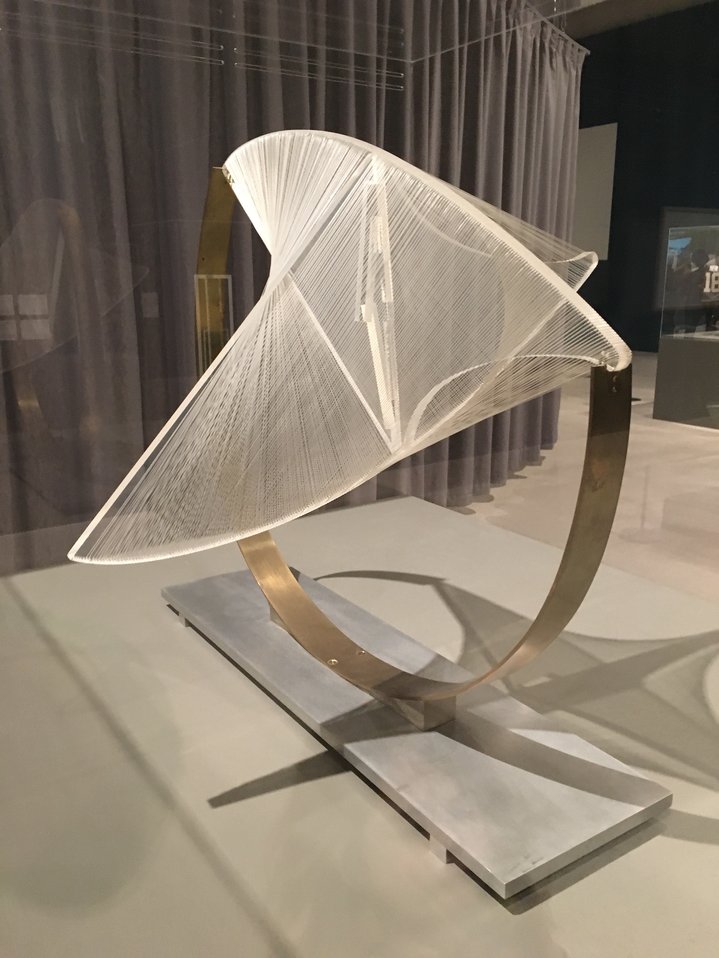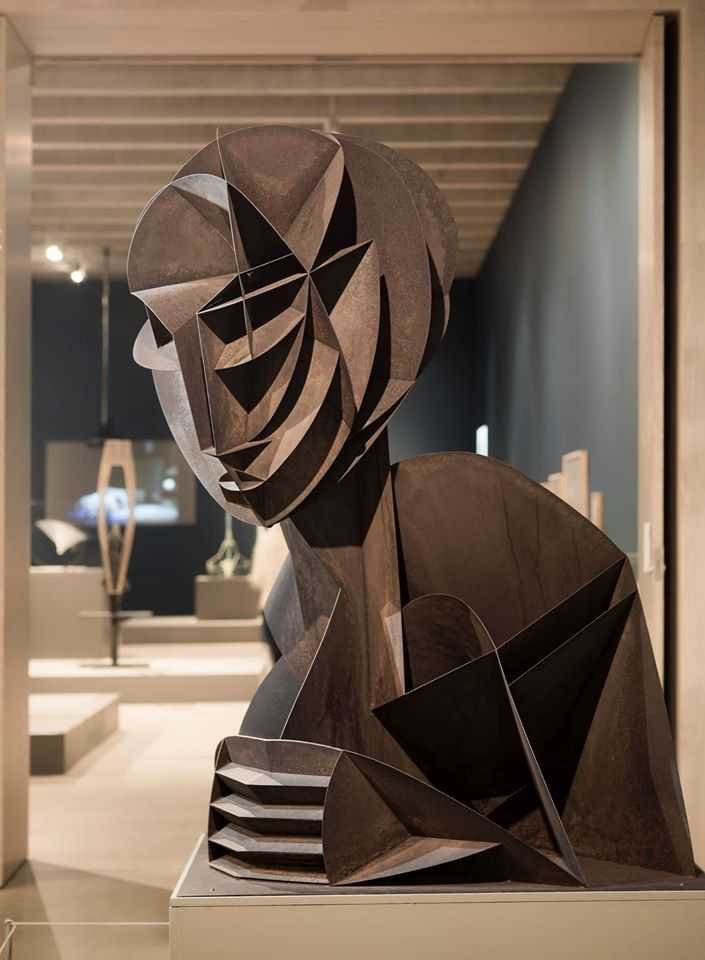Naum Gabo — a sense of “nowness”

A retrospective of a Russian Avant-Garde artist at Tate St Ives offers a narrative of his artistic journey from Russia to Europe to North America.
Architectural and abstract sketches sit next to delicate transparent sculptures, cardboard templates alongside monumental metal figures and minute mechanical models. This is the current display of multi-faceted Russian artist Naum Gabo (1890-1977), whose exhibition has just opened at Tate St Ives. It brings together works showing the huge range of Gabo’s ideas. His multi-disciplinary approach makes Gabo a very modern artist, says Tate St Ives Director Anne Barlow.
“It’s one of the reasons why he continues to be so relevant today, because when you look at this work, it could have been created today, or 10, 20 years from now. He has this incredible sense of nowness,” she said in an interview with Russian Art Focus.
This year marks a century since Gabo’s 1920 ‘Realistic Manifesto’, published in the first heady period after the 1917 Russian Revolution. Gabo and his artist brother, Antoine Pevsner, were leading voices in Russia’s artistic avantgarde, seeking to build a utopian society in Bolshevik Russia. Gabo’s personal copy of the original ‘Realistic Manifesto’, detailing his new “Constructivist” vision, is on display, one of only three surviving examples.
The Constructivists wanted to forge a union between science, engineering and art. The mission would be to serve the people. It is that ethos which defines Gabo’s whole creative practice.
“He might be thinking about architecture one day, then kind of morphing into thinking about a sculptural form or the design of a car,” says Barlow.
Born into a Jewish family in Bryansk, Naum Pevsner, as he was then called, left Tsarist Russia in 1910 to study natural sciences and later engineering in Munich. He eventually took the name Gabo to distinguish himself from his brother Antoine, also a sculptor, whom he joined in Paris just before the outbreak of World War I. The two brothers, who would become the forefathers of kinetic art, spent the war years in Norway, but returned to Russia in early 1917, bent on joining the approaching revolution. Gabo worked alongside Vladimir Tatlin (1885-1953), Wassily Kandinsky (1866-1944) and Alexander Rodchenko (1891-1956), in the VKHUTEMAS art and technical school, founded in 1920.
He created one of his earliest kinetic explorations of time and space, ‘Standing Wave’(1918-1920), as a demonstration model for the VKHUTEMAS students. On display at Tate St Ives, this delicate mechanical structure creates a visualisation of sound waves. It set the tone for a lifetime of remarkable experiments.
He left Moscow in 1922, travelling to Berlin for the first exhibition of Russian revolutionary art. He had fully intended to return, but became seriously ill with pneumonia in Berlin and then fell in love with Elisabeth Richter, wife of German artist Hans Richter. Gabo never returned to Russia. He later again rejoined his brother Antoine in Paris, where they designed Sergei Diaghilev’s ballet ‘La Chatte’ (1926). Then in 1936, Gabo moved to Britain. He became part of an artistic circle which included Henry Moore, Ben Nicholson and Barbara Hepworth and moved from London to St Ives in Cornwall.
In 1946, Gabo left England for the U.S., where he pursued a successful career, finally able to realise at scale, the sculptures he had until then only planned as ideas in sketches. The invention of Perspex in the early 1930s proved a breakthrough for Gabo, who used its transparency to create de-materialised sculptural forms such as the 1958 piece ‘Linear Construction in Space No.2’. Hundreds of nylon filaments suspended inside a clear Perspex frame, create the illusion of shimmering movement.
“Gabo sees finally he can create what he’s been imagining mentally only,” Barlow notes.
Gabo’s creative journey from Russia through Europe to the U.S. makes him a “truly transnational artist” says Tate curator Natalia Sidlina. But he always thought of himself as a Russian artist; he submitted fluid, futuristic designs for Stalin’s Palace of the Soviets in 1931 – also on show at the Tate – and kept his Soviet passport until 1953. Gabo would always write in Russian in his diary when things got tough, adds Sidlina. But during Stalin’s terror, he lost contact with his family in Russia, who returned his letters from abroad. It wasn’t until 1959 that he received a letter from his brother Alexei handed to him through a museum. Alexei then made several visits to America, bringing with him designs from Gabo’s Moscow archive stitched inside a false suitcase bottom. Sidlina shows the smuggled pieces of a precious cardboard template for the model of his ‘Constructed Torso’, kept hidden since 1917 and finally reassembled by Gabo when it reached the U.S. In the 1960s Gabo re-worked his early sketches, made just after the Russian revolution, as the basis for some of the huge metal sculptures that form his most iconic work.
“It’s not about a form, crystallized and fixed in space, it’s about the idea which transcends that,” Sidlina stressed.
And his ideas remain fresh and intriguing today. Gabo’s multi-layered, “transnational”, cross-disciplinary works appeal to a generation whose reality is defined by digital experience, the curator added.
“Gabo wanted to give visual identity to something which doesn’t exist and this resonates with people who deal on a daily basis with virtual reality, something which only exists when you switch on your computer.”










